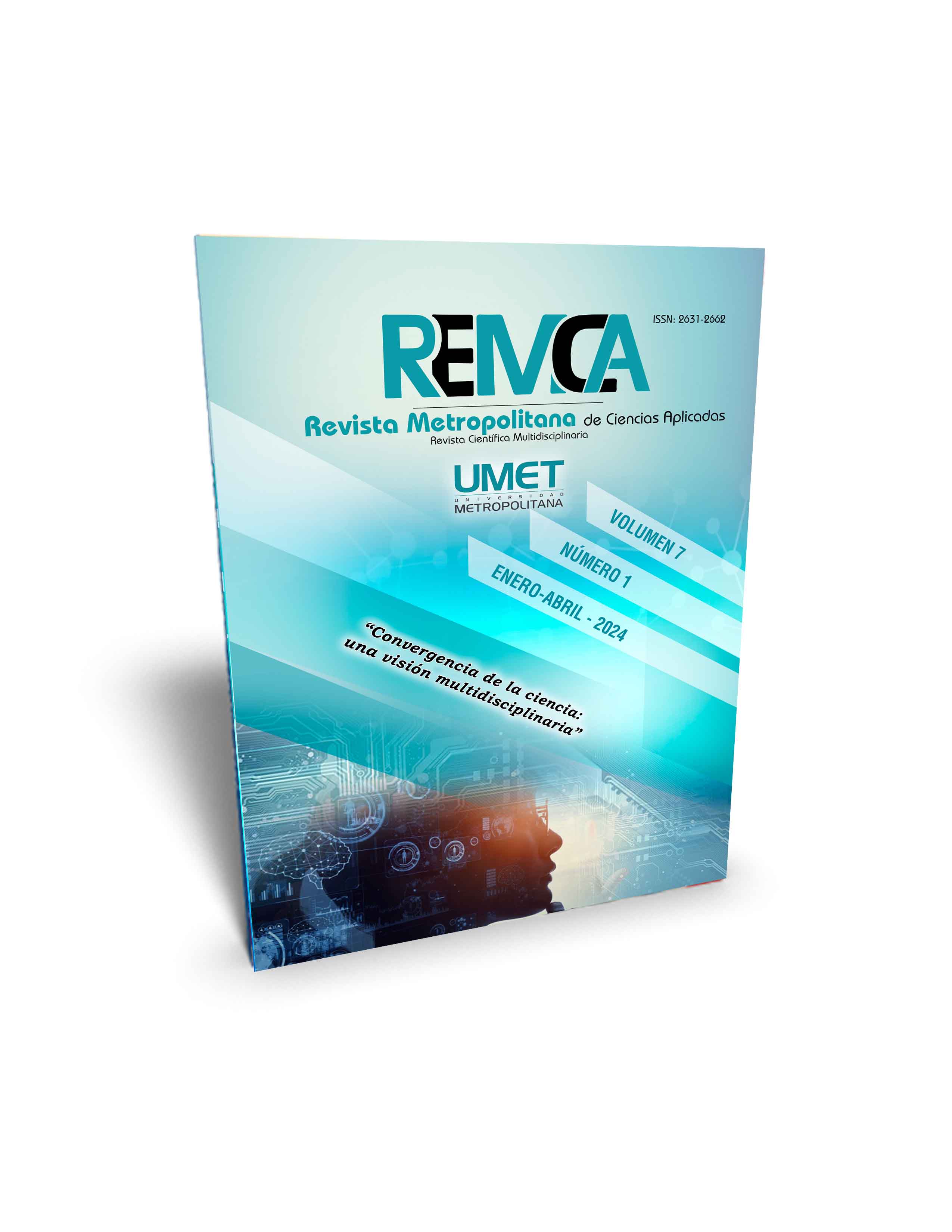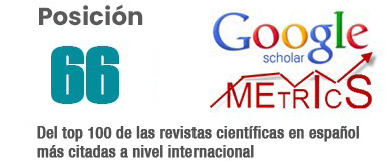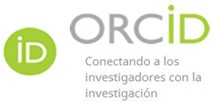Hygienical food handling competences in Portoviejo Central Market Food handlers
DOI:
https://doi.org/10.62452/65m4vz22Keywords:
Local development, tourism, food safety, gastronomyAbstract
Urban markets serve various functions, including being a focal point for culinary tourism. The recently inaugurated Plaza Central Market in Portoviejo, Ecuador is in a position where strategies can be designed and implemented to strengthen its role as a catalyst for culinary tourism in Ecuador. Competencies in food hygiene among the market's food preparers were assessed through questionnaires measuring knowledge, skills, and attitudes. The majority of food preparers in the market are female, with an average age of fifty-six years and predominantly primary and secondary education. Knowledge (68%) and attitudes (65%) demonstrate a good level of competency, with an excellent level of competency in attitudes (85%). There were identified areas that require reinforcement in terms of cross-contamination and sanitation, as well as a need for training in time and temperature control and food pathogens. It is also recommended to make adaptations to the training programs.
Downloads
References
Alcaraz, E., Gutiérrez, Ó., & Solano, M. (2022). Efectos de la masificación turística y de los cambios en el consumo sobre los mercados locales. El caso de La Boquería de Barcelona. https://observatoriocultural.udgvirtual.udg.mx/repositorio/handle/123456789/1417
Al-Kandari, D., Al-abdeen, J., & Sidhu, J. (2019). Food safety knowledge, attitudes and practices of food handlers in restaurants in Kuwait. Food Control, 103, 103–110.
Angelillo, I. F., Viggiani, N. M. A., Rizzo, L., & Bianco, A. (2000). Food Handlers and Foodborne Diseases: Knowledge, Attitudes, and Reported Behavior in Italy. Journal of Food Protection, 63(3), 381–385.
Brillat-Savarin, & Fisher, M. F. (2011). The physiology of taste, or, Meditations on transcendental gastronomy. Vintage Books.
Cang, V. (2018). Japan’s Washoku as Intangible Heritage: The Role of National Food Traditions in UNESCO’s Cultural Heritage Scheme. International Journal of Cultural Property, 25(4), 491–513.
Carrera, M. (2022, septiembre 10). Portoviejo: Playa, parques y cocina patrimonial. El Comercio. https://www.elcomercio.com/tendencias/sociedad/portoviejo-playa-parques-cocina-patrimonial.html
Cartay, R., Poveda, E., Buzetta, M. F., Cartay, R., Poveda, E., & Buzetta, M. F. (2021). Estrategias de reactivación de economías deprimidas con base en el desarrollo de cocinas regionales en Portoviejo (Manabí, Ecuador), 2016-2020. https://ageconsearch.umn.edu/record/316763/
Cedeño-Campuzano, M. G., Mera-Párraga, M. J., Anchundia-Loor, A. M., & Toro-Loor, E. T. (2023). Análisis de la gestión del capital humano en los comedores del mercado central de Portoviejo. Revista Científica Arbitrada De Investigación En Comunicación, Marketing Y Empresa REICOMUNICAR. ISSN 2737-6354., 6(11), 135-148.
Chakrabarty, D. (1992). Of Garbage, Modernity and the Citizen’s Gaze. Economic and Political Weekly, 27(10/11), 541–547.
Ching-Hsu, H., & Nai-Yun, H. (2020). Constructing Core Knowledge of Culinology. Journal of Tourism and Leisure Studies, 26(2), 203–229.
Dalmasso, E., & Fillon, P. (1972). Aspectos de la organización espacial del Ecuador. Revista Mexicana de Sociología, 34(1).
De Miguel Molina, M., De Miguel Molina, B., Santamarina Campos, V., & del Val Segarra Oña, M. (2016). Intangible Heritage and Gastronomy: The Impact of UNESCO Gastronomy Elements. Journal of Culinary Science & Technology, 14(4), 293–310.
Dixit, S. K. (2021). Gastronomic tourism: A theoretical construct. En The Routledge Handbook of Gastronomic Tourism. Routledge.
Duarte-Casar, R., Robalino-Vallejo, J., Buzetta-Ricaurte, M. F., & Rojas-Le-Fort, M. (2022). Toward a characterization of Ecuadorian ceviche: Much more than shrimp. Journal of Ethnic Foods, 9(1), 1–12.
El Diario. (2010). El “mercadazo”, detalle reservado al buen diente. El Diario Ecuador. https://www.eldiario.ec/noticias-manabi-ecuador/151378-el-mercadazo-detalle-reservado-al-buen-diente/
Espinosa, A. D., Lagunes, I. R., & Menotti, I. S. (2008). Validez concurrente de la escala de deseabilidad social de domínguez utilizando la escala de deseabilidad social de marlowe-crowne. Revista Iberoamericana de Diagnóstico y Evaluación Psicológica, 1(25), 125–139.
Favier Dubois, C. M., Storchi Lobos, D., Lunniss, R., Mora Mendoza, A., & Ortiz Aguilú, J. J. (2019). Pre-Hispanic Fishing Structures Preserved on the Central Coast of Ecuador. Journal of Maritime Archaeology, 14(1), 107–126.
Franco, F. M., Chaw, L. L., Bakar, N., & Abas, S. N. H. (2020). Socialising over fruits and vegetables: The biocultural importance of an open-air market in Bandar Seri Begawan, Brunei Darussalam. Journal of Ethnobiology and Ethnomedicine, 16(1).
Frigolé, J. (2010). Constructing cultural and natural heritage:parks,museums and rural heritage, nstitut de Recerca en Patrimoni Cultural de la Universitat de Girona.
Galarza Cachiguango, I. S., Aguinaga, C., López, P., Molina, R., y Rosero Ortega, G. (2020). Competencias laborales en el sector de la restauración: un marco de competencias clave para su gestión. Turismo Y Sociedad, 27, 161–181.
Gillespie, C., & Cousins, J. A. (2006). European gastronomy into the 21st century (Repr). Butterworth-Heinemann.
Ichijo, A. (2017). Banal Nationalism and UNESCO’s Intangible Cultural Heritage List: Cases of Washoku and the Gastronomic Meal of the French. En, M. Skey & M. Antonsich (Eds.), Everyday Nationhood: Theorising Culture, Identity and Belonging after Banal Nationalism. (pp. 259–284). Palgrave Macmillan,
Ecuador. Instituto Nacional de Patrimonio Cultural . (2018). La Cocina Tradicional Manabita, recibe la certificación de Patrimonio Cultural Inmaterial del Ecuador. https://www.patrimoniocultural.gob.ec/la-cocina-tradicional-manabita-recibe-la-certificacion-de-patrimonio-cultural-inmaterial-del-ecuador/
Isoni Auad, L., Cortez Ginani, V., dos Santos Leandro, E., Stedefeldt, E., Habu, S., Yoshio Nakano, E., Costa Santos Nunes, A., & Puppin Zandonadi, R. (2019). Food Trucks: Assessment of an Evaluation Instrument Designed for the Prevention of Foodborne Diseases. Nutrients, 11(2).
Jahan, S. (2012). Epidemiology of Foodborne Illness. En Scientific, Health and Social Aspects of the Food Industry. IntechOpen.
Kocevski, J., & Risteski, M. (2020). Defining cuisine and types of cuisine. Horizons International Scientific Journal Series A Social Sciences and Humanities, 26, 291–302.
Li, W., Pires, S. M., Liu, Z., Ma, X., Liang, J., Jiang, Y., Chen, J., Liang, J., Wang, S., Wang, L., Wang, Y., Meng, C., Huo, X., Lan, Z., Lai, S., Liu, C., Han, H., Liu, J., Fu, P., & Guo, Y. (2020). Surveillance of foodborne disease outbreaks in China, 2003–2017. Food Control, 118.
Maberly, C., & Reid, D. (2014). Gastronomy: An approach to studying food. Nutrition & Food Science, 44(4), 272–278.
Manzanero-Medina, G. I., Vásquez-Dávila, M. A., Lustre-Sánchez, H., & Pérez-Herrera, A. (2020). Ethnobotany of food plants (quelites) sold in two traditional markets of Oaxaca, Mexico. South African Journal of Botany, 130, 215–223.
Marie Cappelen, S., & Strandgaard Pedersen, J. (2021). Inventing Culinary Heritage through Strategic Historical Ambiguity. Organization Studies, 42(2), 223–243.
Martínez de Albeniz, I. (2021). In praise of complexity: From gastronomy to gastrology. International Journal of Gastronomy and Food Science, 25.
Parys, N. (2013). Cooking up a culinary identity for Belgium. Gastrolinguistics in two Belgian cookbooks (19th century). Appetite, 71, 218–231.
Regalado-Espinoza, L. (2019). Manabí y su comida milenaria (2a ed.). Ediciones ULEAM.
Romagnoli, M. (2019). Gastronomic heritage elements at UNESCO: problems, reflections on and interpretations of a new heritage category. International Journal of Intangible Heritage, 14, 157–171.
Sánchez Santacruz, R. F., Barahona Tapia, L. I., & Maldonado Manzano, R. L. (2022). Causas fundamentales de la migración hacia y desde el Ecuador. Universidad Y Sociedad, 14(S2), 308-314.
Santich, B. (2004). The study of gastronomy and its relevance to hospitality education and training. International Journal of Hospitality Management, 23(1), 15–24.
Silalahi, M., & Wakhidah, A. Z. (2023). The food plants trade in the Kranggan Mas traditional market, West Java Province, Indonesia: Food security and local cuisine. Journal of Ethnic Foods, 10(1).
Singh, R., & Kumar, S. (2019). Information Literacy Competency Level of Social Science Researchers with Respect to Information Use Ethics A Study. DESIDOC Journal of Library and Information Technology, 39, 101–108.
Temizkan, R., & Uslu, A. N. (2023). The number of women in the cooking profession is low: Is it just because of gender discrimination? International Journal of Gastronomy and Food Science, 32.
This, H. (2009). Molecular Gastronomy, a Scientific Look at Cooking. Accounts of Chemical Research, 42(5), 575–583.
Organización de las Naciones Unidas. (2015). Los 17 obhetivos del desarrollo Sostenible. https://sdgs.un.org/es/goals
Organización de las Naciones Unidas para la Educación, la Ciencia y la Cultura. (2019). Portoviejo | Creative Cities Network. https://en.unesco.org/creative-cities/portoviejo
Winter, M., Ulrich, P., Valiente, A., Dalzotto, D., Gonzalez, Y., Beliu, P., Condori, W., Schiavi, M., Luppi, L., García Di Lodovico, A., Ortiz Yoshihara, C., Lechner, S., & Abate, S. D. (2018). La participación en actividades de extensión universitaria como complemento del proceso enseñanza aprendizaje de la Microbiología.(Ponencia). IV (CAMAYA) Congreso Argentino de Microbiología y I Jornada de Microbiología General. Río Negro, Argentina.
Zheng, S. (2023). Safeguarding food heritage through social media? Between heritagization and commercialization. International Journal of Gastronomy and Food Science, 31.
Downloads
Published
Issue
Section
License
Copyright (c) 2024 Marlene Rojas-Le-Fort, Rodrigo Duarte-Casar (Autor/a)

This work is licensed under a Creative Commons Attribution-NonCommercial-ShareAlike 4.0 International License.
Authors who publish in Revista Metropolitana de Ciencias Aplicadas (REMCA), agree to the following terms:
1. Copyright
Authors retain unrestricted copyright to their work. Authors grant the journal the right of first publication. To this end, they assign the journal non-exclusive exploitation rights (reproduction, distribution, public communication, and transformation). Authors may enter into additional agreements for the non-exclusive distribution of the version of the work published in the journal, provided that acknowledgment of its initial publication in this journal is given.
© The authors.
2. License
The articles are published in the journal under the Creative Commons Attribution-NonCommercial-ShareAlike 4.0 International License (CC BY-NC-SA 4.0). The terms can be found at: https://creativecommons.org/licenses/by-nc-sa/4.0/deed.en
This license allows:
- Sharing: Copying and redistributing the material in any medium or format.
- Adapting: Remixing, transforming, and building upon the material.
Under the following terms:
- Attribution: You must give appropriate credit, provide a link to the license, and indicate if any changes were made. You may do this in any reasonable manner, but not in any way that suggests the licensor endorses or sponsors your use.
- NonCommercial: You may not use the material for commercial purposes.
- ShareAlike: If you remix, transform, or build upon the material, you must distribute your creation under the same license as the original work.
There are no additional restrictions. You may not apply legal terms or technological measures that legally restrict others from doing anything the license permits.




